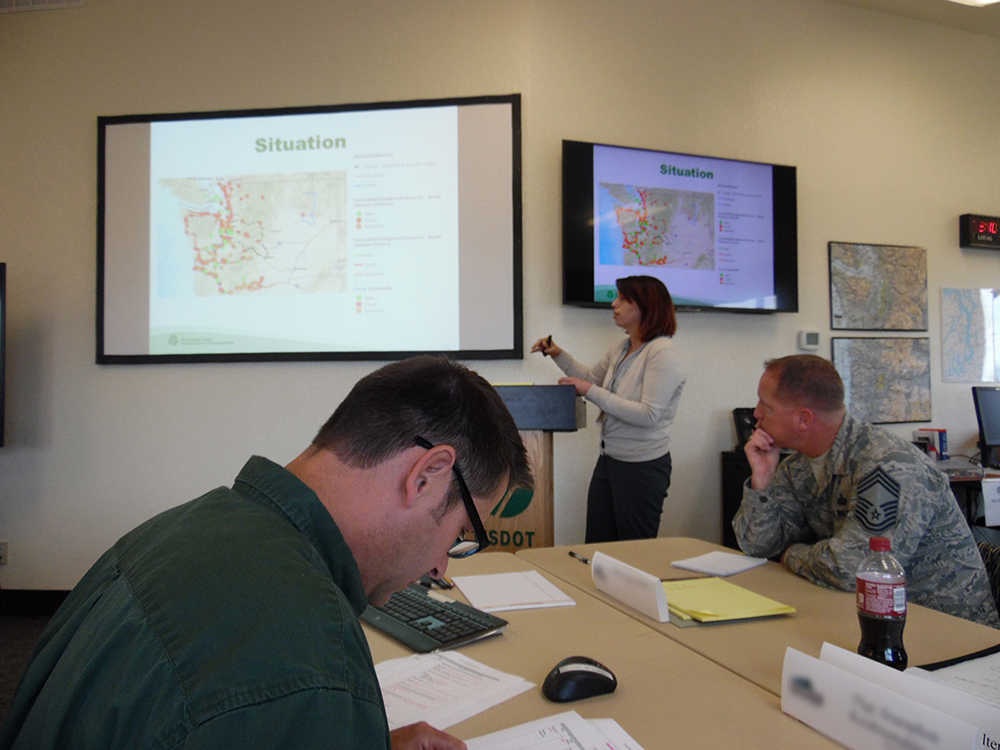Safety Risk Management (SRM) is a proactive process that has contributed to making aviation safer. The primary steps in SRM are to identify the hazards, evaluate the risks for severity and likelihood, then take steps to mitigate or avoid those risks. This simple technique has improved safety in aviation beyond what planners, designers, engineers and administrators could do from just analyzing accidents and writing more regulations. The state of Washington recently applied the same proactive principle in the State-wide disaster drill, Cascadia Rising.
Safety Risk Management for a Washington State Earthquake
Looking at the recent exercise conducted by the state through an aviation safety risk management process, the following is my perspective:
IDENTIFY THE HAZARD: Washington has a big hazard, in the form of the Cascadia Subduction Zone just off the coastline. The Juan de Fuca Plate is constantly being pushed under the North American Plate and on occasion these plates slip, causing earthquakes.
DETERMINE THE RISK: A 9.0+ seismic event earthquake, subsequent tsunami, and aftershocks. Geologists have evidence it has happened before, and they are certain another event is coming. We just don’t know when it will happen because plate tectonics and fault line breaks aren’t exactly predictable.
ESTIMATE THE PROBABILITY: That a 9.0 earthquake event will occur on any given day is very small. The probability that it will happen sometime in the next 100 years is much more likely.
ASSESS THE SEVERITY: Effects of a 9.0 earthquake on Western Washington would be, in a word, unprecedented. Coastal communities, devastated. Transportation infrastructure of bridges, tunnels, rail, roads, and pipelines all failed. Buildings and structures would suffer failures to varying degrees, some catastrophically. No power, water, or fuel. The effects would compound with unpredictable outcomes on population centers, emergency services, and law enforcement. How best to respond with the resources available? Because roads and bridges will out of commission, aviation becomes the main link for supplies, evacuation, and medical treatment.
PLAN THE MITIGATION: Plan and test emergency response to improve outcomes for people and infrastructure. The instrument chosen for this is an exercise involving applicable responders across state, local, and federal government levels and in partnership with non-governmental organizations and businesses.
How the State of Washington Is Preparing
To test its response, the state conducted Cascadia Rising from June 7 – 10 this year. While there were other command centers activated across the state, the Washington State Department of Transportation (WSDOT) Aviation Emergency Coordination Center (AECC) in Olympia served as the hub for air operations. I spent some time there as an observer and as part of a test to see if engineering consultants have a useful role in the operations center setting. Agencies at the AECC included the Federal Aviation Administration (FAA), military, state, and regional civilian aviation groups.
Military crews established power, communications, computer networks, and coordination for the aircrews and mission response. As the scenario unfolded, crews diligently worked the problem together and created solutions. The exercise served its purposes: to give responders a chance to practice what they’ve planned for and to identify what works and what areas need further development. That’s a positive outcome for all of us.
Safety Risk Management makes all of our lives better, safer. Even if we don’t see it or know it is being used. We can’t predict or prevent a natural disaster from occurring, but we are getting better equipped to respond, endure and recover.


